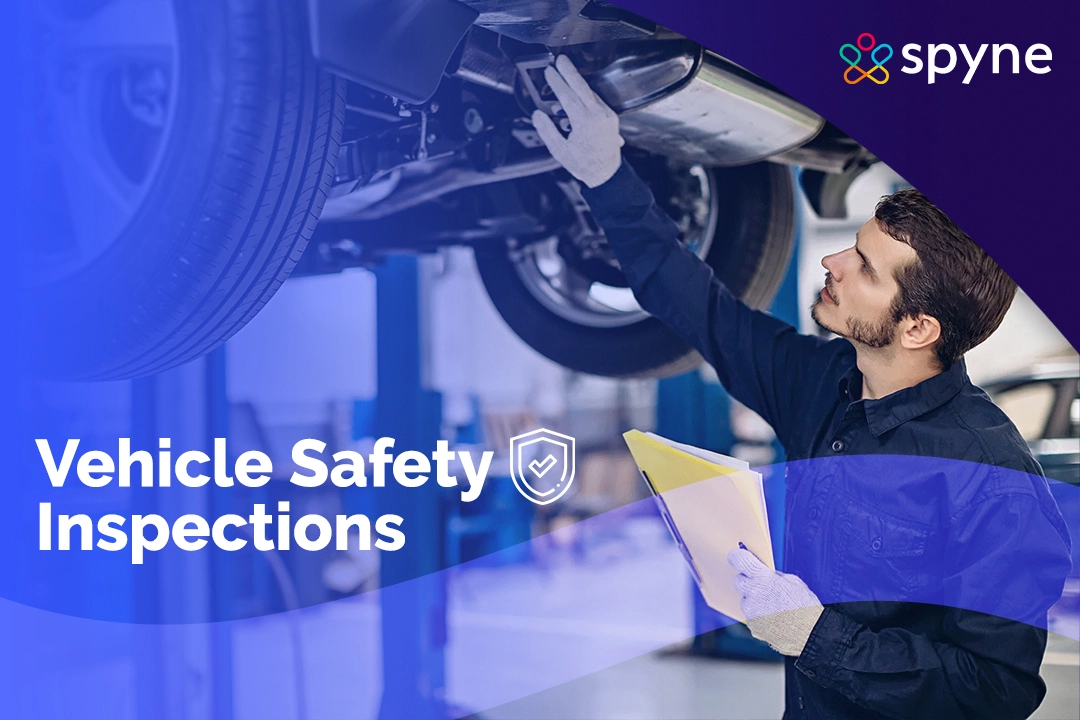Vehicle safety inspection programs play a critical role in both public safety and sensible car use. All parts of a vehicle grow old and worn out with age and mileage. This will potentially leads to hazardous driving conditions. Regular checkups ensure that the automobiles remain in good working condition for public safety and drivers.
This guide discusses the importance of personal and commercial vehicle safety inspection, advantages, items checked, and much more.
What is Vehicle Safety Inspection?
A vehicle inspection is an examination of the major components of a car to ensure it is capable of being roadworthy. The various examination areas include such things as brakes, tires, lights, steering, and other essential mechanical and safety components. The critical goal is to find potential hazards that may have compromised the safety of the vehicle or its occupants.
State laws usually stipulate that obligatory checks of vehicles for road safety purposes are mandatory, which usually take place within identified centers, such as approved garages or inspection stations. These checks help in road safety by establishing whether the automobiles in question have met certain standards of safety before going on open roads.

Vehicle Safety Inspections Benefits
Regular vehicle safety systems inspection programs have numerous benefits beyond compliance with local rules. Here are a few key benefits:
Increased Security
The advantage of automobile safety inspections is that they increase safety for both drivers and passengers. The checks help prevent accidents caused by mechanical breakdowns, as worn brakes or nonfunctioning lights are detected early. A car kept in good condition is less likely to break or malfunction while driving.
Observance of the Law
Among the traffic laws, several U.S. states require regular vehicle safety checks and tests. Obeying these regulations ensures that your car meets essential safety standards and also keeps you from receiving fines. Failure to comply can lead to fines or other consequences, like restrictions on vehicle registration.
Longer Vehicle Lifespan
Regular checks extend the life of your car by spotting tiny problems before they become big ones. For instance, early detection of a leak in oil might save from damage to the engine that may call for high repair bills. Routine car inspections ascertain that it will remain dependable for years to come.
Higher Resale Value
Protection of the Environment
Safety and emissions inspection forms one of the common components during vehicle safety assessments to validate observance of environmental standards. They do form part of a healthy environment and clean air creation since they track down cars making too many pollutants.
Emotional peace
The confidence of driving is knowing your car has passed its safety check. You and your passengers can enjoy the trip knowing that your vehicle is dependable and safe, reducing anxiety about potential breakdowns or accidents.
The Different State Laws of the United States Regarding Car Safety Check
Different regional attitudes toward road safety and car maintenance are indeed reflected in the significant differences in the car safety inspection and emission legislation seen within the United States.
Compulsory Inspections
Although different jurisdictions might have different standards, depending on factors such as age or type of vehicle, around 14 states require regular safety check-ins for all vehicles:
- Virginia: Requires that all vehicles pass annual inspections to ensure that they meet the state’s standards of safety.
- Texas: Requires an annual inspection with emissions testing in specific areas, primarily cities, where air quality is a problem.
- California: Emissions testing would be more paramount than overall safety checks for most cars, but some riskier models would still require detailed checks.
Emissions Testing
- New York: Annual safety and emissions testing are required to maintain both mechanical integrity and environmental standards.
- Massachusetts: A merged inspection program is adopted for every vehicle wherein both aspects are checked together, making it convenient for drivers while ensuring thorough appraisals.
Exemptions
Some states exempt vehicles from inspection based on given criteria:
1) New Hampshire: Vehicles less than two years old are exempted from the mandatory inspections since generally new cars do not have the most serious issues to be encountered.
Exemptions Some states provide exemptions from inspections based on given criteria:
1) New Hampshire: Exempts vehicles under two years old from mandatory inspections, recognizing that new cars are generally less likely to have significant issues.
2) Alaska: Not usually required but in some local municipalities, although very relevant to the state’s territorial nature and sparse population.
All vehicle owners should be aware of the need to comply with state regulations by understanding the local laws regarding vehicle safety inspections and avoid paying a penalty for violating state regulations.
What Does a Vehicle Safety Inspection Do?
Most often, an in-depth vehicle safety systems inspection program involves checks on various essential parts to ensure that they are safe and functioning properly:
1. Brakes: Brake inspectors check the pads, rotors, lines, and fluid levels to ensure proper stopping force. This examination is of importance because brake failure could lead to serious accidents.
2. Tires: Tire treads are checked for tread depth, wear patterns, and proper inflation levels. Worn or under-inflated tires can seriously affect the ability to handle and stop the vehicle.
3. Signals and Lights: Checking all the lights outside the car headlight, taillight, and turn signals must all pass with flying colors that’s to say they are in good condition to ensure safe vision especially at night or during poor weather conditions.
4. Suspension and steering: Inspect suspension and steering components for wear or damage that could affect the handling or stability of the vehicle. This includes checking power steering fluid levels as well as looking for leaks or excessive wear on the shock absorbers or struts.
5. Wipers and Windshield: There must not be significant cracks or blockages on the windshield, and wipers must function properly to maintain visibility during rain or snow.
6. Seat belts: Seat belts are checked so they retract and latch correctly, providing vital safety in case of an accident.
7. Fluid Levels: To prevent overheating or mechanical failure while in service, liquids such as engine oil, coolant, and brake fluid are checked.
8. Exhaust System: Inspectors check the exhaust system for leaks or damage that could lead to harmful emissions penetrating the cabin or the performance of the vehicle.
9. Battery Condition: The condition of the battery is checked to ensure it retains a charge well; corroded terminals are also cleaned during this check to ensure good electrical contact in all systems of the vehicle.
Vehicle Safety Inspection Requirements
To obtain the passing of a vehicle safety inspection, vehicles must meet the requirements according to local regulations:
1) Mechanical Integrity: Vehicles must not have serious mechanical defects that could pose a safety risk.
2) Installed Security Features: All required safety features must be operational including lights, brakes, and others.
3) Emission Standards: Vehicles must meet local emission standards if applicable.
4) Documentation: The owners may have to furnish documents of prior inspection or any repair done since the last check.
Certified technicians in certified facilities conduct inspections can range from state-owned garages or other private mechanics who specialize in auto maintenance.
Vehicle Safety Inspection Failure Consequences
If the vehicle safety systems inspection program of a vehicle fails, then the following consequences can arise:
1) Repair Requirements
2) Possible Penalties
Driving a vehicle that has failed an inspection may lead to fines or penalties from law enforcement when police catch the operation of an unsafe vehicle on public roads is the motivation for drivers to take responsibility ensuring their cars remain compliant with established guidelines!
3) Registration Issues
4) Increased Insurance Premiums
Insurance companies may view frequent failures as indicative of poor maintenance habits; this could lead to increased premiums over time as risk assessments change based on driving behavior patterns associated with failing vehicles!
Why is Spyne the Best Choice for You?
In terms of ensuring that your vehicle is up-to-code on all inspections—Spyne stands out for its forward-thinking approach!
Robust Solutions
Spyne has an advanced vehicle safety systems inspection program specifically tailored to streamline the processes around routine assessment-making it more efficient than ever before!
Prompt Scheduling
Spyne allows easy scheduling of inspections at any convenient time by its user-friendly platform, resulting in avoiding such lengthy waiting times that come along with traditional methods and adjusting the solution to meet individual needs.
Live Status Updates
Customers receive live updates of their inspection status via the application by sending notifications—keeping customers updated every step of the way without constant follow-ups!
Comprehensive Reports
Choosing Spyne’s services not only makes compliance easier with local regulations but also the overall safety of the vehicle, which makes it an ideal partner for responsible car ownership!
Conclusion
Vehicle safety inspection program play a vital role in ensuring road safety while keeping legal standards intact across the vast jurisdictions of the United States!



























